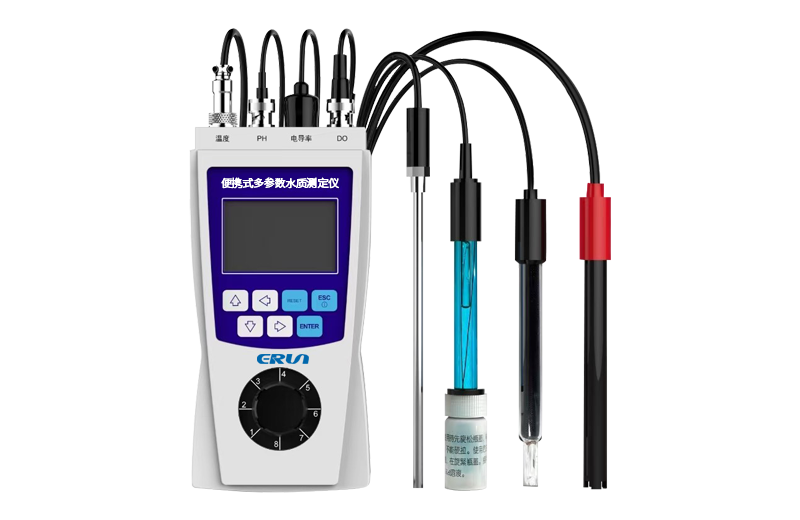Dissolved oxygen (DO) is a critical parameter in assessing water quality, as it directly impacts aquatic life and indicates the health of an ecosystem. Measuring dissolved oxygen levels is essential for environmental monitoring, aquaculture, wastewater treatment, and research. One of the most accurate and efficient ways to measure DO is by using a dissolved oxygen sensor. This article will guide you through the process of measuring dissolved oxygen in water using a sensor, ensuring reliable and precise results.

Dissolved oxygen refers to the amount of oxygen gas (O₂) present in water. It is vital for the survival of aquatic organisms, including fish, invertebrates, and bacteria. The concentration of DO is influenced by factors such as temperature, salinity, atmospheric pressure, and the presence of organic matter. Low DO levels can lead to hypoxia, harming aquatic ecosystems, while excessive levels may indicate pollution.
Using a dissolved oxygen sensor is a preferred method because it provides real-time, accurate, and consistent measurements. Unlike traditional methods like the Winkler titration, which is time-consuming and requires chemical reagents, sensors are portable, easy to use, and suitable for both field and laboratory applications.
There are two main types of DO sensors:
1. Optical Dissolved Oxygen Sensors: These sensors use luminescence technology. A fluorescent dye is excited by a light source, and the sensor measures the intensity and duration of the emitted light, which correlates with the DO concentration.
2. Electrochemical Dissolved Oxygen Sensors: These include galvanic and polarographic sensors. They measure DO by generating an electrical current proportional to the oxygen concentration in the water.
1. Calibrate the Sensor
Before taking measurements, calibrate the sensor to ensure accuracy. Most sensors require a two-point calibration:
- Zero Calibration: Use a zero-oxygen solution (e.g., sodium sulfite).
- Span Calibration: Use water-saturated air or a calibration solution with a known DO concentration.
Follow the manufacturer’s instructions for calibration, as procedures may vary between models.
2. Prepare the Sensor
- Ensure the sensor is clean and free from debris or biofilm, which can affect readings.
- If using an electrochemical sensor, check the electrolyte solution and membrane for damage or contamination.
- For optical sensors, ensure the sensing cap is intact and free from scratches.
3. Take the Measurement
- Submerge the sensor probe into the water sample. Ensure the sensing element is fully immersed.
- Allow the sensor to stabilize, as readings may take a few seconds to a minute to settle.
- Record the DO concentration displayed on the sensor’s interface. Some sensors also measure temperature and automatically compensate for its effect on DO levels.
4. Maintain the Sensor
- Rinse the sensor with clean water after use to prevent contamination.
- Store the sensor according to the manufacturer’s guidelines, often in a moist environment to keep the membrane hydrated.
- Temperature: DO levels decrease as water temperature increases. Most sensors have built-in temperature compensation.
- Salinity: Higher salinity reduces DO solubility. Some sensors allow for salinity correction.
- Atmospheric Pressure: Changes in pressure can affect DO readings. Ensure the sensor accounts for altitude or pressure variations.
- Water Flow: Stagnant water may have lower DO levels compared to flowing water. Agitate the sample gently if necessary.
- Environmental Monitoring: Assess the health of rivers, lakes, and oceans.
- Aquaculture: Maintain optimal DO levels for fish and other aquatic species.
- Wastewater Treatment: Monitor DO to ensure efficient biological treatment processes.
- Research: Study oxygen dynamics in aquatic ecosystems.
- Regularly calibrate the sensor to maintain accuracy.
- Avoid exposing the sensor to extreme temperatures or direct sunlight.
- Replace worn-out membranes or sensing caps as needed.
- Use the sensor in water with minimal turbulence to prevent air bubbles from affecting readings.
Measuring dissolved oxygen in water using a sensor is a straightforward and reliable method for assessing water quality. By following proper calibration, measurement, and maintenance procedures, you can obtain accurate DO readings that are essential for environmental and industrial applications. Whether you’re monitoring a natural water body or managing an aquaculture system, a dissolved oxygen sensor is an indispensable tool for ensuring the health and sustainability of aquatic environments.
By understanding the importance of dissolved oxygen and mastering the use of DO sensors, you can contribute to better water management and conservation efforts worldwide.